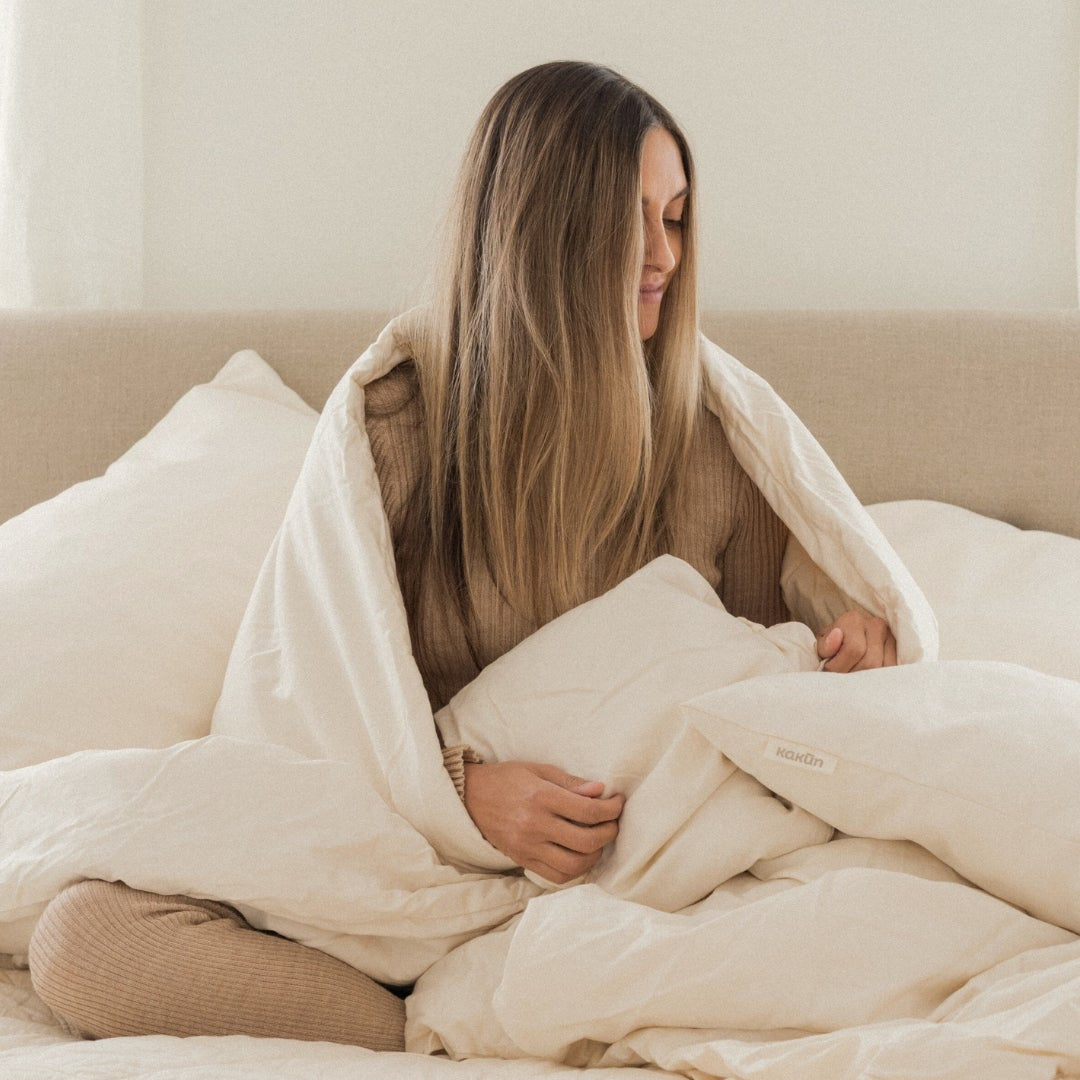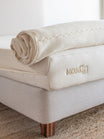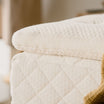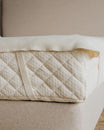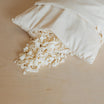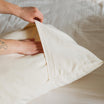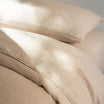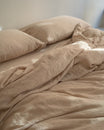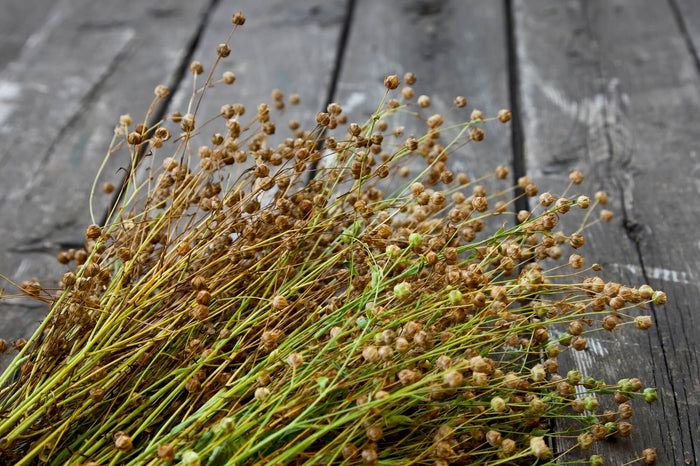More than 36,000 years ago, cave people wrapped themselves in fabric woven from the fibres of the flax plant. It kept them warm, dried quickly, and most importantly, it was durable enough to withstand the many ordeals of Paleolithic life. In those dark caves of southeastern Europe, it would have been hard for inhabitants to imagine that a millennia later, the very same material, linen, would be considered beautiful, luxurious, and premium quality.
Today, linen fabric is enjoying a resurgence in popularity after decades spent in the shadow of cheap, mass-produced cotton. But with increasing availability of pure linen textiles that have been thoughtfully produced and designed, conscious consumers are beginning to understand what it has to offer. The casual, textured elegance of linen resonates with people whose homes fit into a wide range of design styles, from farmhouse, modern, or rustic, to boho and even traditional or classic modes thanks to linen’s understated high quality and relaxed look. And thanks to linen’s durability, easy care, and sustainable production, it’s likely to remain a bedroom fixture for years to come. So if you’re thinking about adding linen to your home textile collection, we’ve put together a quick primer on what makes linen so alluring.
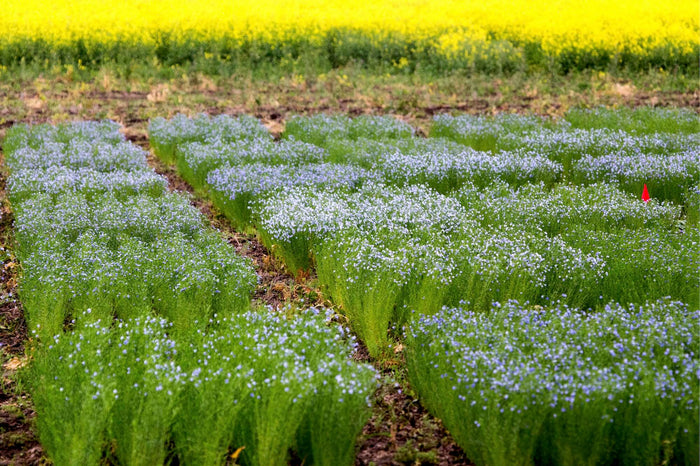
How Linen is Made
Linen is grown in many locations around the world, with much of it produced in Western Europe and Ukraine. When grown in these ideal locations, flax plants require very little fertilizer and are naturally pest resistant, which means your new bed linens will have added almost no chemicals to the environment. And unlike cotton, flax agriculture needs virtually no irrigation, which reduces your bedroom’s overall water consumption significantly.
Every linen item at Resthouse, like our Coyuchi Organic Relaxed Linen Sheet Set, is made from one hundred percent organic linen fibres; because linen can only be grown on a piece of land once every seven years, farmers must plant different organic crops during the remaining six seasons. This means that by purchasing organic linen, you are contributing to increased production of other organic products as well, which is great for the planet and your peace of mind.
Once the flax plant has been grown, it is processed into a variety of products. In addition to linen fabric destined for bedrooms around the world, out put from the versatile flax plant includes highly nutritious seeds for food and oil, and other fibres that can be used in upholstery stuffing, papermaking, and in bedding for only the fanciest horses. These multiple output streams mean that the linen production process is very low waste, with nearly every part of the plant being useful.
Why Linen is Wonderful
There are so many reasons why linen is perfect for your bedroom (or bathroom, living room, or kitchen). And many of those reasons are linked to the fact that linen is a bast fibre. Not familiar? Bast fibres develop naturally as the covering of stems of certain plant species, like flax, which is usually four feet high at harvest time. This covering extends the full length of the stem, which means linen fibres are significantly longer and straighter than many other materials, like cotton, which is a soft, fluffy ball of shorter fibres at harvest time. So, linen’s longer fibres tend to be much stronger, even more so when wet. This means that an item like the Coyuchi Mojave Organic Linen Blanket, which could see a lot of use on your bed, sofa, patio lounger, or all of the above, is much more durable than an equivalent item made from a different textile. This benefit alone can offset the higher cost of linen bedding, as your linen items will almost always last much longer than other fabrics. In the battle of cotton vs. linen sheets, longer lasting bed clothes derived from flax may tip your scale toward linen.
Caring for linen is as easy as it gets. Thanks to bast fibres, linen is machine washable, as its durability can stand up to your washer’s agitator. The extra long fibres also shrink less than cotton when placed in your dryer. You can also iron or steam linen textiles according to your needs.
Bast fibres like linen also soften with use. In contrast to petroleum-based synthetic materials, linen’s natural fibres absorb water and the repeated cycle of absorption and drying leads to a smooth and supple fabric that remains strong—just as nature intended. Speaking of moisture, linen also dries faster than cotton and many other fabrics, which is great for linen towels or even hanging your sheets to dry outside; the reason, again, is bast fibres, which are long and smooth so they don’t knit together densely like cotton. Instead, linen is always woven, which means water evaporates faster as air moves through the tiny spaces in the fabric. And of course, the woven nature of linen fabric also means that products like the Organic Relaxed Linen Pillowcases are both breathable and temperature regulating, which is great for all seasons, summer in particular, as well as for people who sleep hot.
Sure, linen is great for the environment, durable, and functional. But what about how it looks spread across your bed each night? Well, the most wonderful thing about linen is its casual yet refined elegance. Linen fabric is wash and wear, with an attractively crinkled surface texture that keeps your bed looking incredible without any ironing necessary, and it feels lovely against your skin each night. Linen gives you the permission to be both chic and comfortable without having to work hard for either. And you don’t have to commit to a fully linen bedroom straight away—linen combines beautifully with other fabrics. Start with Organic Relaxed Linen Fitted Sheets by Coyuchi as an accent, mixing and matching with other organic fibres already in your collection.
When It’s Over
While your linen may be more durable than virtually every other natural fibre on the market, it’s important to remember that all good things come to an end, eventually. Linen sheets or blankets may last for your entire life and even the lives of your progeny, but when they’ve been loved to death and are no longer functional, they have one last benefit to offer: linen is highly biodegradable. Buried in soil, natural linen can decompose in only two weeks. That’s faster than man made materials, which can take decades or longer to biodegrade, and even faster than organic cotton, which decomposes very quickly in just five months. So when you’ve enjoyed a lifetime of great sleeps, you can feel good about the footprint of the bedding you leave behind.
From the time it is planted in fertile ground, to the end of its useful life, and all the years in between, linen is an amazing and unique material. If you’re in search of the perfect home textile that is luxurious, beautiful, comfortable, functional, and sustainable, it’s time to give in to the lure of linen.


